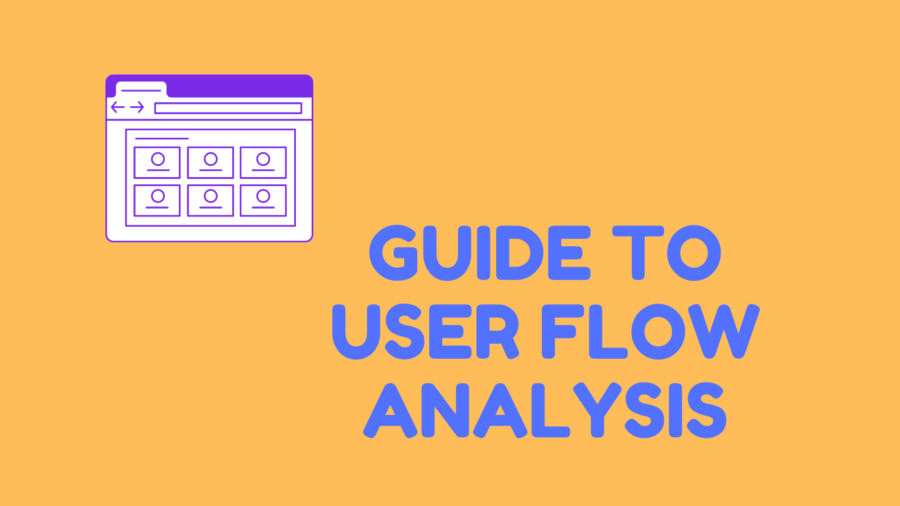User experience is paramount. A seamless, intuitive journey through your product can make or break its success. For product managers, understanding user behavior is the key to crafting such experiences, and this is where user flow analysis comes into play.
User flow analysis is not just a buzzword; it’s a critical process that enables product managers to gain deep insights into how users interact with their products. In this blog post, we’ll delve into the world of user flow analysis, its importance, methodologies, and how product managers can leverage it to drive success.
What is User Flow Analysis?
User flow analysis systematically examines the steps a user takes while navigating through a digital product. It involves mapping out the paths users follow, their actions, and their decisions. The goal is to comprehensively understand user behavior, identify bottlenecks, and optimize the user experience accordingly.
Imagine you’re the product manager of an e-commerce website. User flow analysis would help you understand how visitors land on your homepage, browse products, add items to their cart, proceed to checkout, and make a purchase. By visualizing and analyzing this flow, you can pinpoint areas where users drop off or encounter difficulties, leading to cart abandonment. With this knowledge, you can make data-driven decisions to enhance the user journey and boost conversions.
Why is User Flow Analysis Crucial for Product Managers?
- Enhanced User Experience: Understanding the user’s journey enables you to create a more intuitive and user-friendly product. Addressing pain points and streamlining the flow can provide a smoother experience that engages users.
- Data-Driven Decision Making: User flow analysis is not based on guesswork. It’s grounded in data and analytics. Product managers can make informed decisions backed by real user behavior, minimizing risks and maximizing the chances of success.
- Conversion Optimization: Increasing conversions is often a top priority for product managers. User flow analysis helps identify where users drop off, enabling you to optimize those specific points to increase conversion rates.
- Competitive Advantage: A superior user experience can set your product apart in a crowded market. User flow analysis gives you the insights needed to stay one step ahead of the competition.
Methods of User Flow Analysis
User flow analysis involves several methodologies and tools, and the choice depends on your product and goals. Here are some common approaches:
- Google Analytics: This popular tool allows you to track user journeys on your website. You can visualize user flows, identify drop-off points, and even segment users based on various criteria.
- Session Recordings: Tools like Hotjar or Crazy Egg record user sessions, letting you see exactly how users navigate your product. This can be incredibly insightful in understanding their behavior.
- Heatmaps: Heatmaps display where users click, move their cursors, or scroll on a webpage. They provide a visual representation of user engagement and can reveal areas of interest or frustration.
- A/B Testing: Conducting A/B tests on different user flow variations can help you determine which changes have a positive impact on user behavior and conversion rates.
- User Surveys and Feedback: Direct input from users through surveys and feedback forms can provide qualitative insights into their experience, which can complement quantitative data.
The User Flow Analysis Process
To effectively use user flow analysis, product managers should follow a structured process:
1. Define Objectives:
Start by identifying your goals. What specific aspects of user behavior do you want to understand or improve? Defining clear objectives is essential for a focused analysis.
2. Data Collection:
Gather data through the chosen methods, such as analytics tools, session recordings, or heatmaps. Ensure that your data collection aligns with your objectives.
3. Visualize User Flows:
Create visual representations of user flows. This could be a flowchart or a digital representation of users’ paths. Identify the most common and critical paths.
4. Identify Pain Points:
Analyze the user flows to identify bottlenecks, drop-off points, or areas where users seem to struggle. These are your pain points, and addressing them can lead to significant improvements.
5. Hypothesize and Test:
Based on your analysis, develop hypotheses about how to improve the user experience. Implement changes and conduct A/B tests to validate your hypotheses.
6. Monitor and Iterate:
User flow analysis is an ongoing process. Continuously monitor user behavior, track the impact of your changes, and iterate based on new data.
User Flow Analysis in Action
Let’s return to the example of the e-commerce website. After conducting a user flow analysis, you may discover that a significant number of users abandon their carts on the shipping information page. This is a critical pain point. To address it, you might:
- Simplify the shipping form, reducing the number of required fields.
- Add progress indicators to show users how many steps are left in the checkout process.
- Offer multiple shipping options, including faster delivery for those willing to pay extra.
After implementing these changes, you continue to monitor user flow data. If you observe an increase in the number of users completing the checkout process, you’ve successfully optimized the user experience.
Conclusion
User flow analysis is a powerful tool in a product manager’s arsenal. It provides valuable insights into user behavior, allowing you to make data-driven decisions that enhance the user experience, boost conversions, and gain a competitive edge. By following a structured process and using the right tools, you can unlock the full potential of user flow analysis and drive the success of your digital product.
In a world where user expectations are constantly evolving, mastering user flow analysis is not just an option; it’s necessary for product managers looking to create exceptional digital experiences that keep users coming back for more. So, start analyzing those flows, uncover the pain points, and watch your product thrive in the hands of satisfied users.





